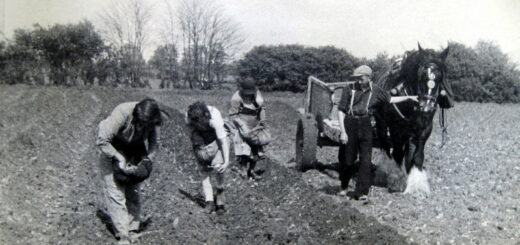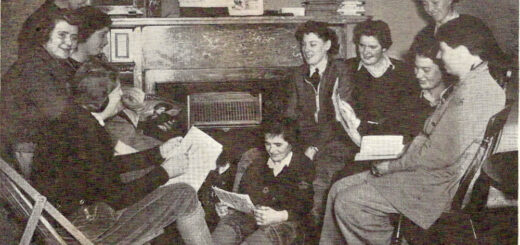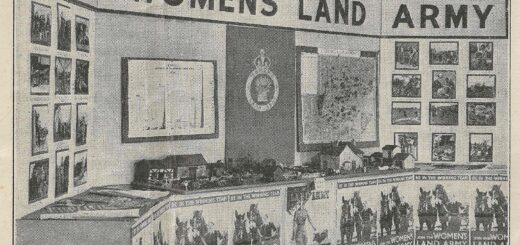February WLA Snapshot in 5: Norfolk
February’s post focuses on the WLA in Norfolk which employed nearly 2,000 Land Girls. If you were a Land Girl who worked in Norfolk, or know one who was, then drop me an e-mail.
1. Land Girls leaving Norwich Cathedral after the Thanksgiving service in 1945.
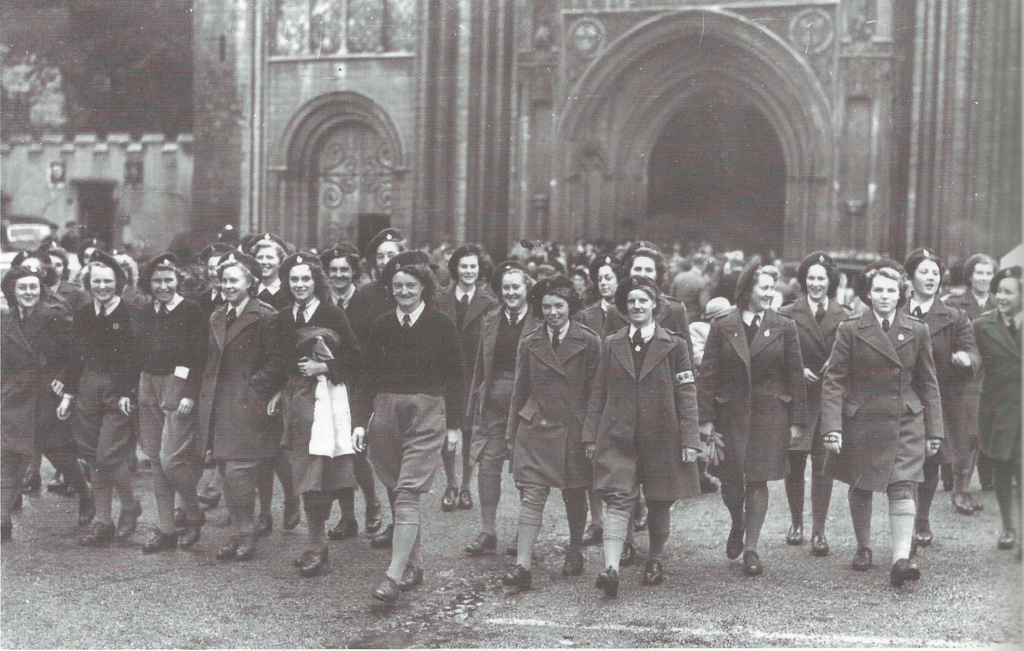
Smiling Land Girls dressed smartly in their uniform are unusually wearing berets, the iconic headgear of the Women’s Timber Corps. Towards the end of the war, the WLA issued Land Girls with berets, as these looked smarter for events where Land Girls would be seen, on mass. Compared to the WLA hats, berets couldn’t be worn so imaginatively by Land Girls, making for a smarter, more uniformed look.
(If you’re interested in finding out the controversies of the WLA hat, see this page in the August 1944 edition of The Land Girl, showing just how many ones one WLA hat could be worn by women.)
Source: Norfolk in the Second World War, A Pictorial History, Neil Storey, p.96.
2. Members of the Norfolk WLA County Office at 7 Christchurch Road, Norwich in 1944.
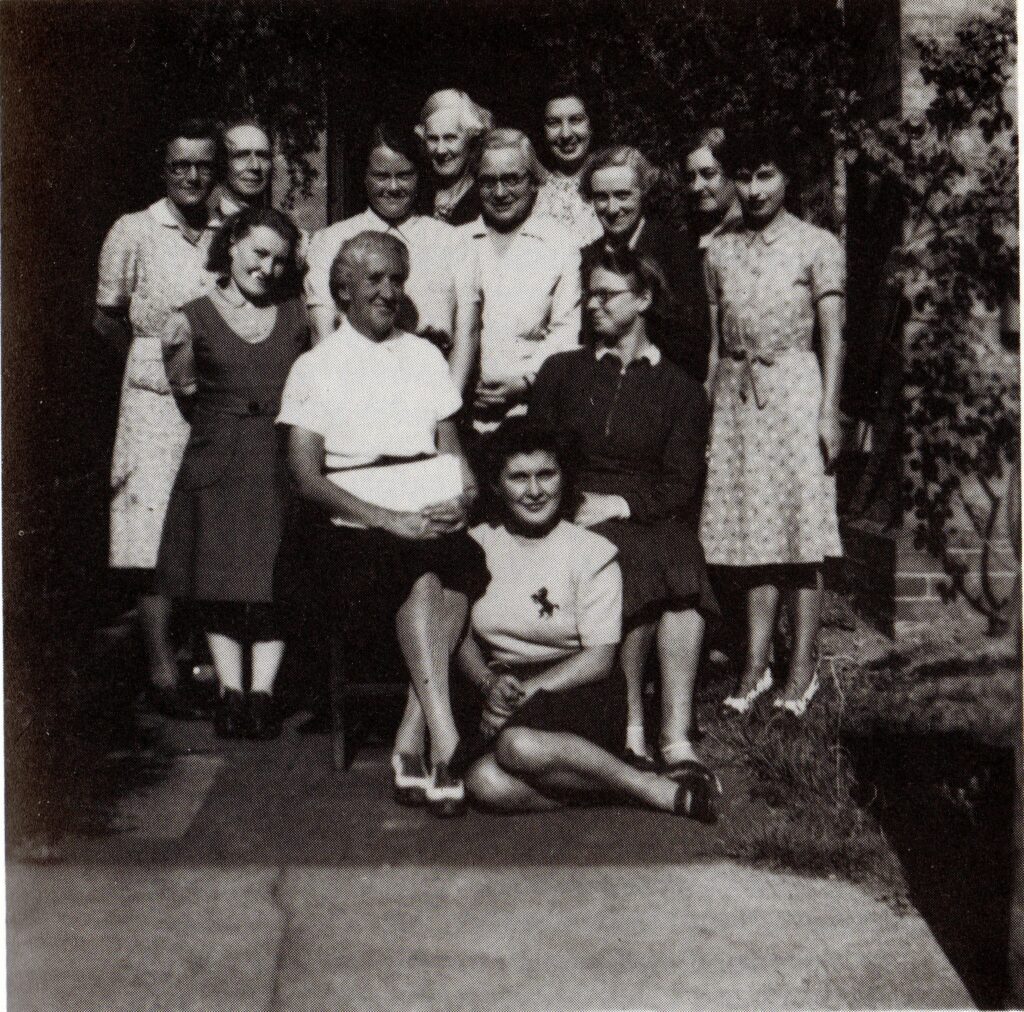
The lady sitting on the right is, in her own words ‘The Boss’, aka County Secretary Iris Tillet. Iris is the only woman to have written about her experiences in the role, providing a valuable window into what it meant to run the WLA in Norfolk. You can read more about what County Secretaries did for the WLA here. And keep an eye out, we might just be featuring a page on Iris’ fascinating life in the not too distant future…
Source: Cinderella Army, Iris Tillet, p. 25.
3. Map of Norfolk’s wartime agricultural contributions, sold by WLA County Secretaries.
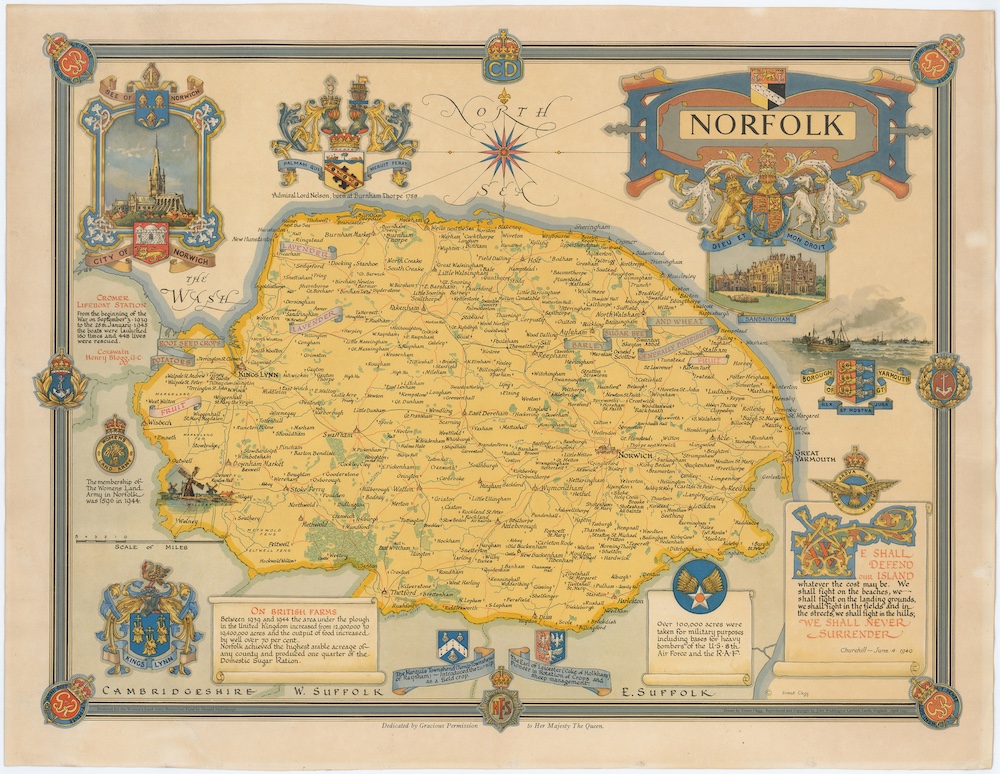
This beautiful map was drawn by cartographer Mr Clegg and Mr Donald McCollugh. The map shows what crops were grown in different parts of the county, as well as details on how the land was used during wartime. Note the statistics on Norfolk’s agricultural contribution in the bottom left-hand corner; Norfolk achieved the highest arable acreage of all the counties and grew a quarter of the country’s sugar ration. Maps such as these were lent to each of counties for exhibition before they were then put on sale. If Land Girls wanted a copy, they could order them through their County Secretaries. According to The Land Girl in August 1946, a single map cost 10/6d, and helped to raise money for the WLA Benevolent Fund. Clegg also produced maps for Kent, Sussex, Cambridgeshire, amongst others.
Source: Catherine Procter Collection
4. The Land Girl’s Day poem by Norfolk Land Girl Dorothy Allen, 1942.
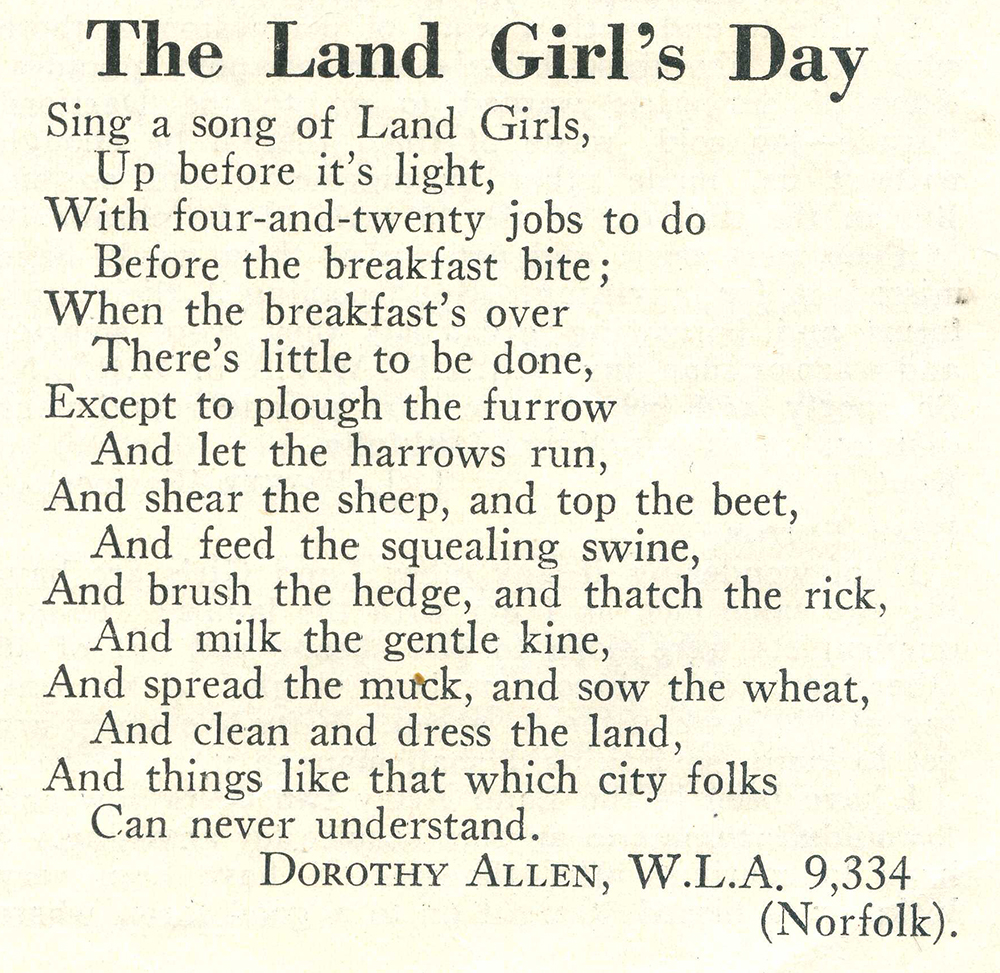
Here, Dorothy Allen gives ‘Sing A Song of Sixpence’ a Land Girl spin. She highlights the variety and volume of work which women like her had to carry out; ploughing, shearing sheep, hedging, milking, thatching – naming just a few. Living now in rural Norfolk, Dorothy references the town and country divide, reflecting that ‘city folks’ have no idea of the agricultural work being carried out in the country.
Source: The Land Girl, April 1942
5. British Pathé footage of Land Girls working in the forests of a Norfolk estate, 1940.
This video shows women at work in the forests of Norfolk in 1940. Before the setting up of the Women’s Timber Corps in 1942, the WLA employed women to work in help increase timber production. These Norfolk Land Girl recruits are seen cutting up smaller logs of timber, as well as planting new ones. Laden with gendered comments, the commentator remarks how the women are not ‘fellers’, and when showing a shot of women smoking in the forests, he notes how they don’t have ‘much use for powder now, but what’s wrong with a little puff’. Videos such as these provided a window into the isolated life of women’s work in the forests, showing the new wartime roles which women were taking on.
Source: British Pathé
Further information on the WLA in Norfolk
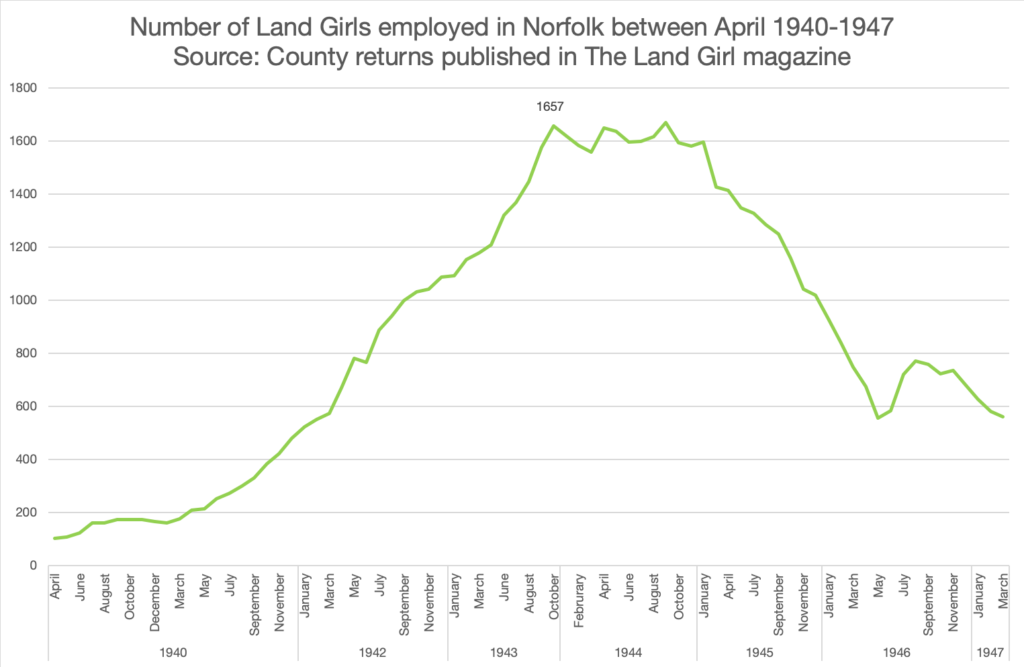
Numbers
Land Girls employed in Norfolk from April 1940 to 1947, calculated from the returns published in The Land Girl magazine. In April 1940, Norfolk employed 104 Land Girls. By October 1943, 1657 Land Girls worked in the county.
Staff members
Chairman: The Dowager Lady Suffield, J.P., Harbord House, Cromer.
Secretary: Miss Iris Tillett, 3 Castle Street, Norwich. Iris Tillett carried out her work in a large room on the second floor of the premises of the Norfolk Federation of Women’s Institute. In 1941, Iris Tillett and her staff moved to larger offices on Prince of Wales Road.
Memoirs
Joan Mary Snelling, A Land Girl’s War (Ipswich England: Old Pond Publishing Ltd, 2004).
Iris Tillett, The Cinderella Army: Women’s Land Army in Norfolk (London: Michael Joseph Ltd, 1988).
Frances Wilding, Land Girl at Large: A Wartime Chronicle (London: Paul Elek, 1972).
Find out more
Interested in seeing more material relating to the WLA in Norfolk? Click here.
Did you or a member of family work in Norfolk as a Land Girl? If so, then get in touch.
